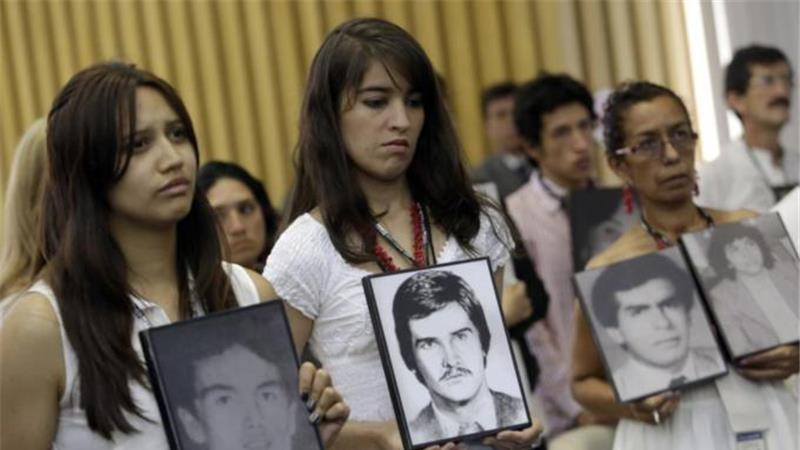






On December 10, Colombia received a judgment of transcendental importance from the Inter-American Court on Human Rights (IACHR), a treaty-based regional tribunal based in Costa Rica that hears cases of human rights violations in the Americas. The Court found Colombia responsible for grave human rights violations committed during one of the darkest chapters of its recent history: the siege of Colombia’s Palace of Justice, home to the Supreme Court.
On November 6 and 7, 1985, members of a guerrilla organisation called M-19 seized control of the Palace of Justice building in the city centre of Bogota, along with approximately 250 hostages. Members of the Colombian security forces had previously received intelligence information about a possible attack on the Palace by the M-19, yet two days before the
On December 10, Colombia received a judgement of transcendental importance from the Inter-American Court on Human Rights (IACHR), a treaty-based regional tribunal based in Costa Rica that hears cases of human rights violations in the Americas. The court found Colombia responsible for grave human rights violations committed during one of the darkest chapters of its recent history: the siege of Colombia’s Palace of Justice, home to the Supreme Court.
On November 6 and 7, 1985, members of a guerrilla organisation called M-19 seized control of the Palace of Justice building in the centre of Bogota, along with approximately 250 hostages. Members of the Colombian security forces had previously received intelligence information about a possible attack on the palace by the M-19, yet two days before the event all security was purposefully withdrawn, leaving soon-to-be hostages – including judges, cafeteria workers, and visitors – unprotected.
What followed remains burned in the memories of many: Colombia’s military retaliated brutally and disproportionately against the M-19 attackers, without any willingness to negotiate or any respect for the lives of the hostages. Tanks and heavy artillery were called in and ordered to fire on the palace, starting a fire that nearly consumed the entire building.
Chief Justice of the Supreme Court Reyes Echandia frantically called then President Belisario Betancurt by radio to request a ceasefire to save the lives of those trapped inside the building. His call was ignored, however, and he died shortly thereafter, along with over 90 others, including civilians and magistrates.
When the military operation ended, many of those who had survived the siege ultimately fared no better. Eleven civilians and one guerrilla member who managed to leave the palace alive were forcibly disappeared by security forces. Two others were killed and an additional four were tortured. A magistrate of the State Council, who also left the palace alive, was tortured and extrajudicially executed and his remains returned to the building to make it look like he had been killed in the crossfire.
The IACHR established all these events after years of litigation, including witness testimony and thousands of pages of evidence. On this basis, the court held Colombia responsible for forced disappearance, torture, and extrajudicial execution. In addition, the IACHR found that Colombia violated its international obligations and the human rights of the victims by failing, during almost three decades, to properly investigate and bring to justice those responsible for human rights violations.
An opportunity to heal
This decision arrives at a critical point in Colombia’s history, as the government tries to turn the page on nearly half a century of internal armed conflict through peace talks with the Revolutionary Armed Forces of Colombia (FARC) and National Liberation Army (ELN). In this context, there is a vibrant debate on what it is needed to achieve peace.
We support the view that moving forward requires the Colombian government to actively look for the disappeared, establish the truth of what happened, and prosecute all those responsible for gross human rights violations. By complying with the court’s ruling, Colombia will show a genuine commitment to justice and respect for the victims of the internal conflict.
Moreover, its institutions will be strengthened; the judiciary would pursue the necessary investigations; the security forces could break the pacts of silence that perpetuated impunity; and the victims would regain trust in the state that has failed them for decades.
What this means for the rest of the Americas
The decision made by the IACHR also sends a clear message to the rest of the hemisphere on the intrinsic relationship between democracy and respect for human rights.
First, governmental and judicial authorities must prioritise and guarantee the protection of the citizens they serve, even in times of conflict or social unrest.
Second, countries that use forced disappearances, torture, and executions as methods to extract information from or deal with individuals perceived as threats to security undermine the rule of law and ignore international legal obligations agreed upon by the international community.
Third, as reiterated by the IACHR, if forced disappearances, torture, and executions were or are used – regardless of context – impartial and expedient investigation and prosecution of those responsible must follow. In the wake of grave human rights violations, the state has a responsibility to guarantee the right to truth and justice for victims. Without acknowledgement of their suffering, a country cannot move forward towards strengthening its democratic institutions.
In conclusion, the court’s decision offers Colombia and all of the Americas an opportunity to end impunity for international crimes and to forge a future of greater peace, transparency, and accountability, and ultimately of stronger democracies.
Originally posted at Al Jazeera Opinion: http://www.aljazeera.com/indepth/opinion/2014/12/palace-justice-siege-colombia-201412218364472448.html
Help us continue this critical and urgent work with a donation!
DONATE NOW